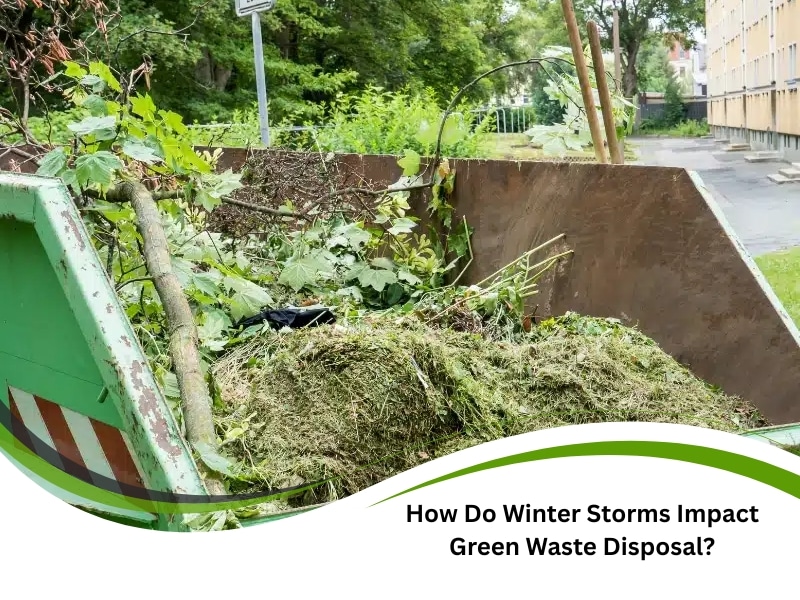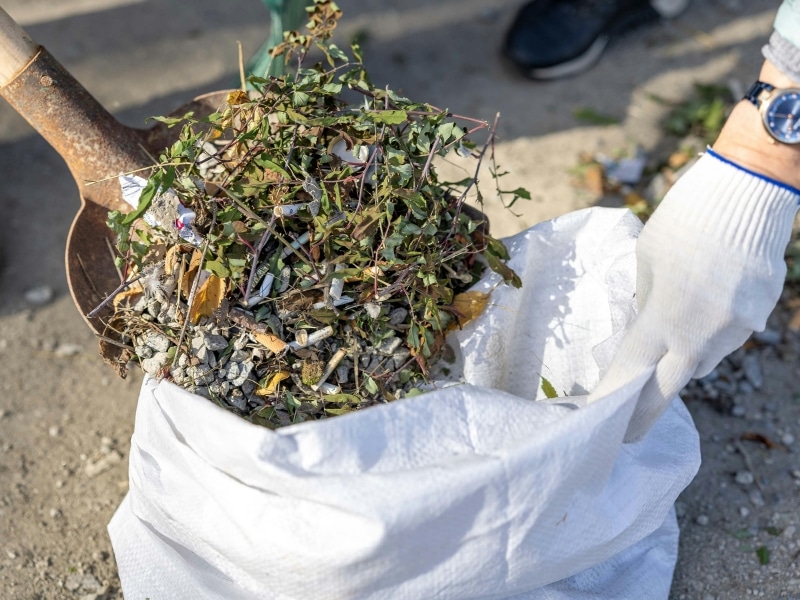When winter storms hit Sydney, they don’t just leave behind puddles and fallen branches—they can also drive up your green waste disposal costs. Heavy rainfall, strong winds, and fluctuating temperatures wreak havoc on your garden, causing sudden surges in organic waste. Unlike routine maintenance, storm damage is messy and unexpected. This leads to higher disposal expenses due to increased volume, extra labour, and limited council bin space. More than that, wet and heavy debris can exceed standard waste limits and attract tipping fees. Without proper planning or an understanding of local regulations, you might end up paying more than you should. This article explores the key factors that influence green waste disposal costs during Sydney’s storm season and offers valuable tips to help you stay ahead of the mess.
What factors influence green waste disposal costs?
Storms change how waste is generated and handled. Several specific factors can drive costs up:
- Volume of debris: More fallen branches and foliage means more to dispose of, which drives up collection and labour charges, especially if multiple trips or skip bins are required over several days.
- Weight-based fees: Wet green waste is heavier, and many disposal centres charge by weight rather than volume. After a storm, saturated material like palm fronds or sodden leaves can increase the load substantially.
- Access difficulty: Storm damage can make removal trickier — slippery ground or blocked paths mean longer job times, and contractors may charge extra for safety measures or specialised equipment.
- Collection frequency: More frequent clean-ups during stormy months increase overall costs. If your green waste bin fills up quickly, you may need additional pickups or consider hiring a green waste bag service.
- Council limits: Council services have volume caps, and exceeding them often triggers extra charges. Many suburbs also enforce strict bundling or containment rules, which can add time and cost if not done properly.
Understanding the seasonal load helps you manage costs before they spike. Knowing the effective solutions for handling green waste disposal in winter gives you a competitive edge when heavy weather strikes.
What are common green waste items in Sydney yards?
Sydney gardens vary, but after a storm, certain types of waste show up more often:
- Tree limbs and branches: High winds snap off branches, cluttering yards with heavy debris that must be cut and bundled before disposal. Larger branches may require the use of a chainsaw or professional assistance.
- Leaves and garden litter: Sudden leaf drops block drains and suffocate lawns. If left too long, they can rot and attract pests or mould, requiring additional cleanup efforts.
- Grass and hedge trimmings: Rain promotes rapid plant growth, requiring more frequent trimming. Clippings can also mat and smother lawns, making removal a regular task to keep grass healthy.
- Palm fronds and seed pods: These break off easily during high winds and quickly pile up. They’re fibrous and tough to cut, which adds time to the job and may not be compostable.
- Weeds and overgrowth: Moist conditions supercharge weed growth, needing constant clearing. Some, like bindii or oxalis, spread quickly and may require targeted removal techniques.
Recognising the types of waste helps you sort and manage them properly. You can also apply cost-saving ideas for yard rubbish removal to minimise how much ends up in the landfill.
How can you reduce green waste disposal costs?
There are practical ways to lower disposal costs while keeping your garden tidy:
- Composting garden waste: Convert lighter organic material into compost to reduce bin volume. Composting also improves soil quality, helping your plants recover faster from storm damage.
- Mulching branches and leaves: Create natural mulch for flowerbeds or around trees. Mulching not only reduces waste but also protects plant roots and keeps moisture in the soil during drier months.
- Pruning before storms: Early trimming prevents heavier post-storm cleanups. Focus on removing dead or weak limbs to reduce the likelihood of storm breakage and make post-storm cleanup faster.
- Breaking down branches: Cutting debris into smaller parts means fewer trips or pickups. It also helps compact more waste into green bins, saving money on extra removals.
- Group disposal: Sharing skip bins or trailer hire with neighbours reduces individual expense. Coordinating a street-wide cleanup after a storm can be a more cost-effective and efficient approach.
You can also plan ahead by using smart ways to reduce winter garden waste, keeping your property in good nick without overspending.
Which services help manage green waste disposal costs?
The exemplary service can ease the cleanup load and lower total costs. Here’s a breakdown:
| Service Type | Benefits | Ideal For |
| Council collection | Reliable, regular, low-cost service | Standard yard upkeep |
| Skip bin hire | Suits bulk loads and storm damage | Major cleanouts |
| Private green waste pickup | Fast, flexible removal without volume limits | Overflow or urgent jobs |
| Tree lopping services | Safe removal of dangerous or large trees | After-storm safety clearance |
| Mobile garden bag services | Ongoing light cleanup, especially in stormy periods | Small gardens or frequent jobs |
It’s also important to consider government targets aimed at reducing organic garden waste, as these influence how green waste is managed nationwide and may impact future pricing structures.
Can seasonal planning lower green waste disposal costs?
Absolutely. With a bit of foresight, you can prevent your garden from becoming a storm casualty — and save on cleanup costs.
- Prune before winter hits: Remove dead or weak branches before storms knock them down. It helps reduce heavy mess and avoids urgent tree lopping fees.
- Space out your garden tasks: Don’t leave everything to one big post-storm session. Regular light maintenance makes disposal easier and more cost-effective.
- Choose hardy native plants: They need less maintenance and withstand rough weather better, cutting down on waste after storms.
- Install rain barrels or drains: This prevents waterlogging and reduces plant damage, limiting debris from root rot or collapsed vegetation.
- Time your cleanups: Aim for after small storms rather than waiting for major build-up. Regular cleanups stop things from getting out of hand.
These steps reduce storm impact and the amount of waste you’ll need to deal with come cleanup time.
Who handles green waste removal in your area?
Your disposal options depend on where you live in Sydney. Here’s what’s typical:
- Inner-city zones: Council pickups are frequent, but space is tight and limits apply. Services may require booking ahead.
- Western Sydney: Larger yards often need private services or trailer hire for storm waste, especially in areas without weekly pickups.
- Northern beaches: Wind damage is typical, so tree removal is often necessary. Local providers usually have storm-ready packages.
- Southern suburbs: A combo of council and private services suits mixed-density housing, where service levels vary widely.
- Hills and outer suburbs: Sloped terrain can complicate removal, so professionals are often called in, particularly for large garden blocks.
Being aware of what’s available helps you plan better and avoid last-minute costs.
Final thoughts
Winter storms in Sydney can throw a real spanner in the works when it comes to garden maintenance. But if you plan ahead and use the right services, you can stay on top of the mess without breaking the bank. From smart pruning schedules to making the most of council pickups, managing green waste disposal costs doesn’t have to be a burden. The key is knowing when to act and whom to rely on when things get out of hand. For tailored support and local expertise, discover how A1 Gardening & Landscaping Sydney can help keep your garden tidy and your costs down this winter.


